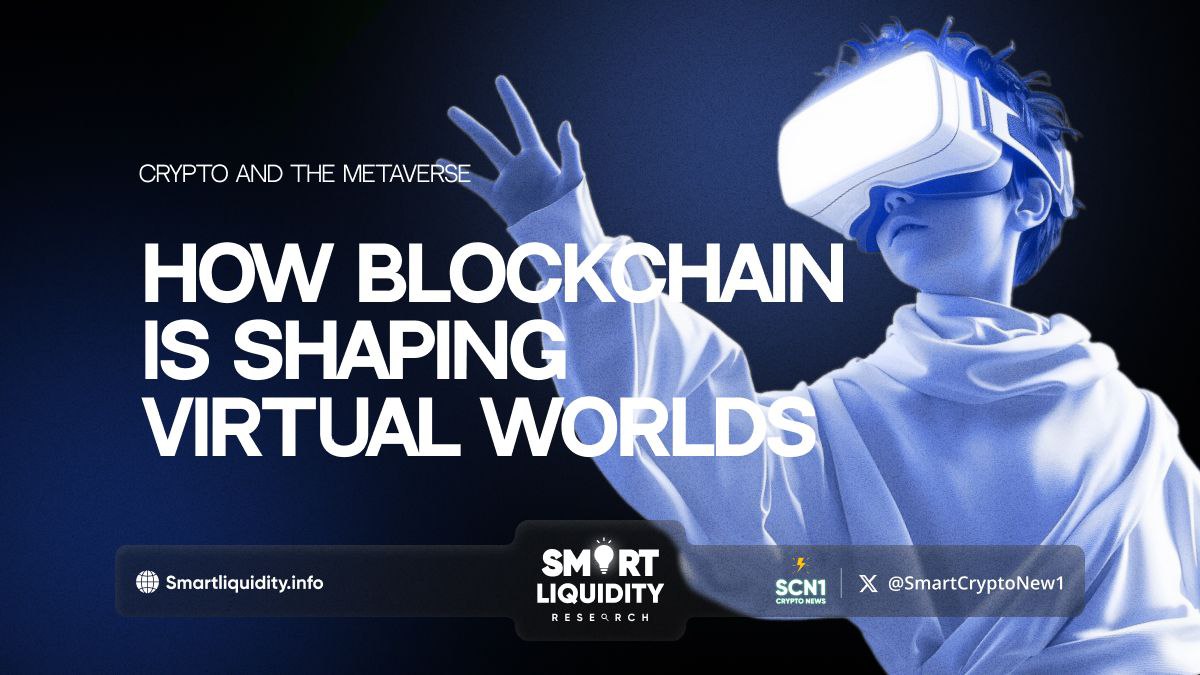Crypto and the Metaverse: How Blockchain is Shaping Virtual Worlds


Crypto and the Metaverse: How Blockchain is Shaping Virtual Worlds! In recent years, the intersection of blockchain technology and virtual worlds has heralded a new era of innovation and possibilities. As virtual environments continue to grow in complexity and popularity, blockchain is emerging as a transformative force, enhancing security, transparency, and user autonomy.
This article explores how blockchain is shaping the future of virtual worlds and redefining the digital landscape.
Decentralization and Ownership
One of the fundamental contributions of blockchain to virtual worlds is decentralization. Traditional virtual environments are often controlled by a single entity, which owns the servers and databases. This centralization poses risks related to data privacy, security breaches, and censorship. Blockchain, however, introduces a decentralized model, distributing data across a network of nodes. This ensures that no single entity has unilateral control, thereby enhancing security and resilience against attacks.
Moreover, blockchain technology empowers users with true ownership of digital assets. In conventional virtual worlds, items, avatars, and virtual real estate are typically owned by the platform provider, meaning users merely rent access. Blockchain, through the use of non-fungible tokens (NFTs), allows users to possess genuine ownership of their digital possessions. These NFTs are unique, indivisible tokens stored on the blockchain, guaranteeing the authenticity and provenance of virtual assets. As a result, users can trade, sell, or transfer their assets freely, fostering a dynamic and self-sustaining virtual economy.
Interoperability and Standardization
Another significant impact of blockchain on virtual worlds is the promotion of interoperability. Currently, many virtual environments operate in isolation, with assets and currencies confined within their respective ecosystems. Blockchain technology facilitates the creation of standardized protocols that enable seamless interaction between different virtual worlds. For instance, a player could transfer an item or currency from one game to another, breaking down silos and enhancing the user experience.
Projects like Decentraland and The Sandbox are pioneering this concept by building virtual worlds on blockchain platforms, allowing users to move assets across different environments effortlessly. This interoperability not only enriches the user experience but also opens new avenues for developers to create interconnected virtual landscapes, fostering collaboration and innovation.
Enhanced Security and Trust
Security is a paramount concern in virtual worlds, where users often invest significant time and money. Blockchain’s inherent characteristics—immutability, transparency, and cryptographic security—address many of these concerns. Transactions recorded on the blockchain are immutable, meaning they cannot be altered or deleted. This feature ensures a transparent and tamper-proof record of all activities, from asset transactions to user interactions.
Furthermore, blockchain’s cryptographic foundations provide robust security measures, protecting user data and virtual assets from hacking and fraud. Smart contracts, self-executing contracts with the terms directly written into code, automate and enforce agreements without the need for intermediaries. This reduces the risk of manipulation and enhances trust between parties, crucial in virtual environments where transactions and interactions are frequent and diverse.
Incentivization and Governance
Blockchain also introduces novel mechanisms for incentivization and governance in virtual worlds. Traditional virtual environments often rely on centralized decision-making, which can lead to issues of fairness and representation. Blockchain, through decentralized autonomous organizations (DAOs), enables community-driven governance. In a DAO, stakeholders—typically represented by token holders—vote on key decisions, ensuring that the virtual world evolves according to the collective will of its users.
Incentivization mechanisms powered by blockchain also play a crucial role. For example, users can earn tokens by contributing to the virtual world, such as creating content, participating in events, or enhancing the community. These tokens can then be used within the virtual environment or traded for other cryptocurrencies, providing real-world value for digital contributions. This creates a vibrant and engaged community, driving the continuous growth and improvement of the virtual world.
In Summary
Blockchain technology is profoundly shaping the future of virtual worlds, introducing a new paradigm of decentralization, ownership, security, and interoperability. By empowering users with true ownership of digital assets, fostering interoperability between different environments, enhancing security, and promoting community-driven governance, blockchain is transforming virtual landscapes into more dynamic, secure, and inclusive spaces. As this technology continues to evolve, the boundaries between the virtual and real worlds will blur, unlocking unprecedented opportunities for creativity, collaboration, and economic growth.




